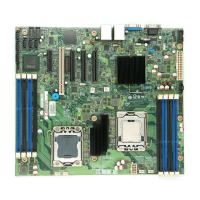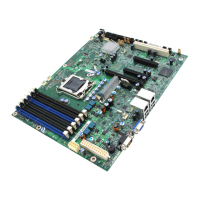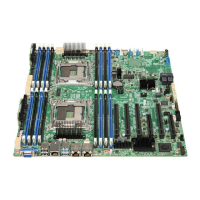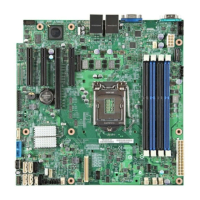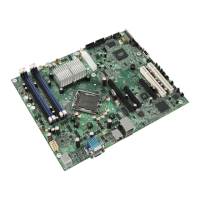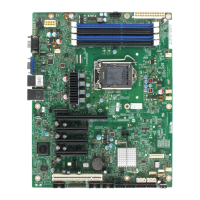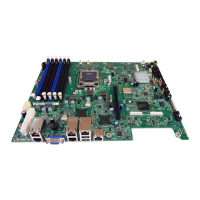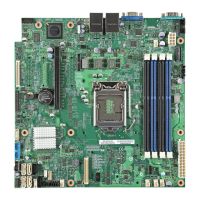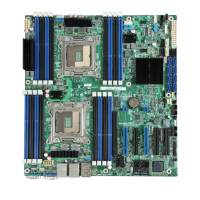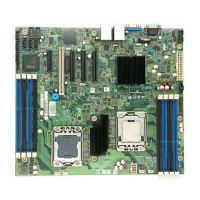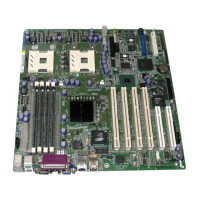Intel® 5000 Series Chipsets Server Board Family Datasheet System BIOS
Revision 1.1
Intel order number D38960-004
39
3.3.9.4.1 Minimum FBDIMM Population for Mirroring
Memory mirroring requires the following minimum requirements:
Branch configuration: Mirroring requires both branches to be active.
Interleave configuration: Mirroring requires that interleaving at the channel level be
enabled on both branches such that the FBDIMMs on the adjacent channels work in
lock-step.
As a direct consequence of these requirements, the minimum FBDIMM population is DIMM_A1,
DIMM_B1, DIMM_C1, and DIMM_D1. For more information, see section
3.3.7.
In this mode the pair of DIMM A1 and DIMM B1, and the pair of DIMM_C1 and DIMM_D1
operate in lock-step on Branch 0 and Branch 1 respectively, meeting the requirements listed
above. Therefore, the minimum number of FBDIMMs for mirroring is four, arranged as
mentioned above. The BIOS will disable all non-identical FBDIMMs, or pairs of FBDIMMs,
across the branches to achieve symmetry and balance between the branches.
Note: Memory sparing and mirroring features are currently disabled and will be made available
after production launch.
3.3.9.5 Automatic Thermal Throttling
The Intel
®
5000 sequence MCH performs automatic electrical throttling on the FBDIMMs when
there is heavy memory traffic, as in the case of a memory intensive application, which indirectly
results in a rise in temperature of the advanced memory buffers (AMBs) on the FBDIMMs. The
BIOS always enables electrical throttling.
The BIOS will send a command to the BMC telling it which fan profile is set in BIOS Setup
(acoustic or performance) and then it will send an additional command to get the settings for
that profile. The BIOS uses the parameters retrieved from the thermal sensor data records
(SDR) and the altitude setting from BIOS Setup to configure the memory and the chipset for
memory throttling and fan speed control. If the BIOS fails to get the thermal SDRs, then it will
use the memory reference code (MRC) default settings for the thermal values.

